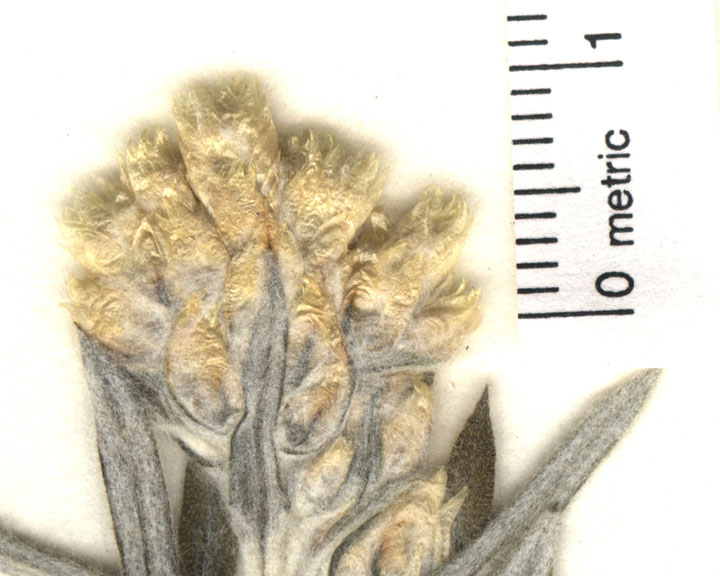Pseudognaphalium
|
Family: Asteraceae |
Annuals, biennials, or perennials (sometimes aromatic), (4-)15-150(-200) cm (usually taprooted, sometimes fibrous-rooted). Stems 1+, usually erect, sometimes decumbent to procumbent (± woolly-tomentose, sometimes stipitate- or sessile-glandular). Leaves basal and cauline or mostly cauline; alternate; usually sessile; blades mostly narrowly lanceolate to oblanceolate, bases often clasping and/or decurrent, margins entire, faces bicolor or concolor, abaxial white to gray and tomentose to velutinous, adaxial usually greenish and glabrous or glabrescent, sometimes grayish and loosely arachnose (sometimes stipitate- or sessile-glandular). Heads disciform, usually in glomerules in corymbiform or paniculiform arrays, sometimes in terminal clusters. Involucres mostly campanulate to cylindric, (3-)4-7 mm. Phyllaries in (2-)3-7(-10) series, whitish, rosy, tawny, or brownish (opaque or hyaline, dull or shiny; stereomes usually green, usually sessile-glandular distally), unequal, usually chartaceous toward tips. Receptacles flat, smooth, epaleate. Peripheral (pistillate) florets (15-)25-250+ (more numerous than bisexual); corollas yellowish. Inner (bisexual) florets (1-)5-20(-40+); corollas yellowish (red-tipped in P. luteoalbum). Cypselae oblong-compressed or cylindric, faces usually smooth, sometimes papillate-roughened and/or with 4-6 longitudinal ridges, usually glabrous (papilliform hairs in P. luteoalbum); pappi readily falling, of 10-12 distinct (coherent basally in Pseudognaphalium luteoalbum and P. stramineum), barbellate bristles in 1 series. x = 7. Fifteen of the species treated here occur also in Mexico; those that do not are Pseudognaphalium obtusifolium, P. saxicola, P. micradenium, and P. helleri (eastern United States and adjacent Canada), and P. ramosissimum and P. thermale (western United States and adjacent Canada). Basal and proximal leaves of Pseudognaphalium species often wither before plants reach flowering. In the key and descriptions here, references to leaves are to cauline leaves of plants at flowering unless otherwise indicated.
|

